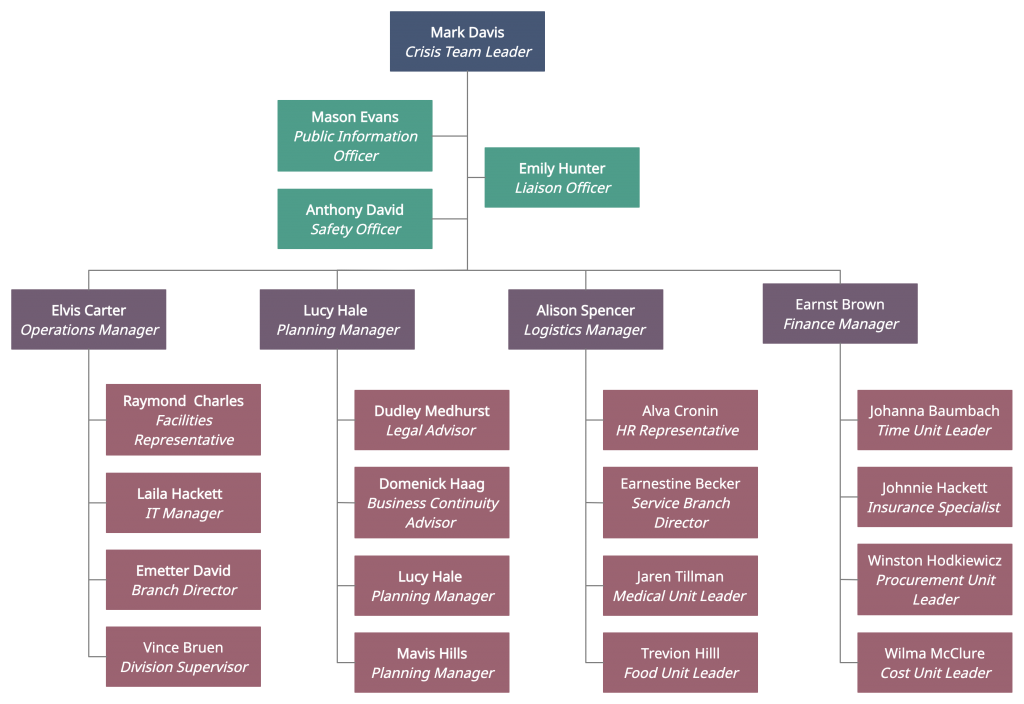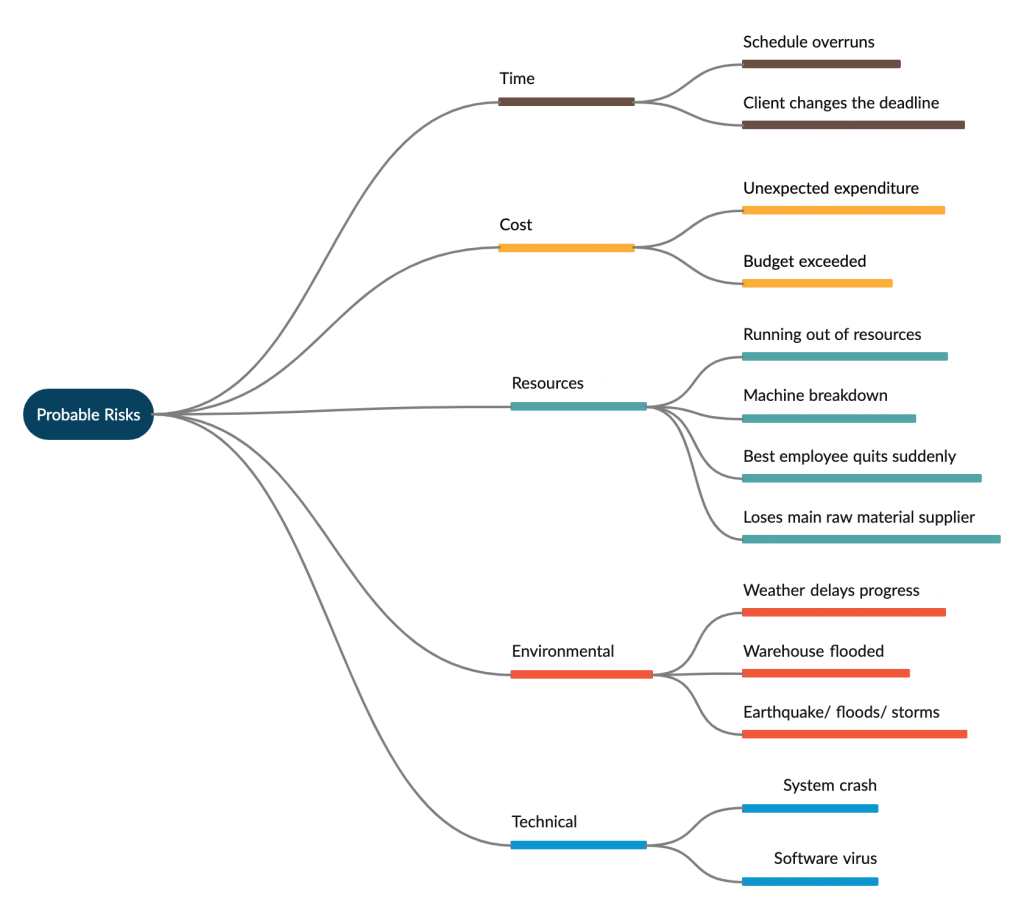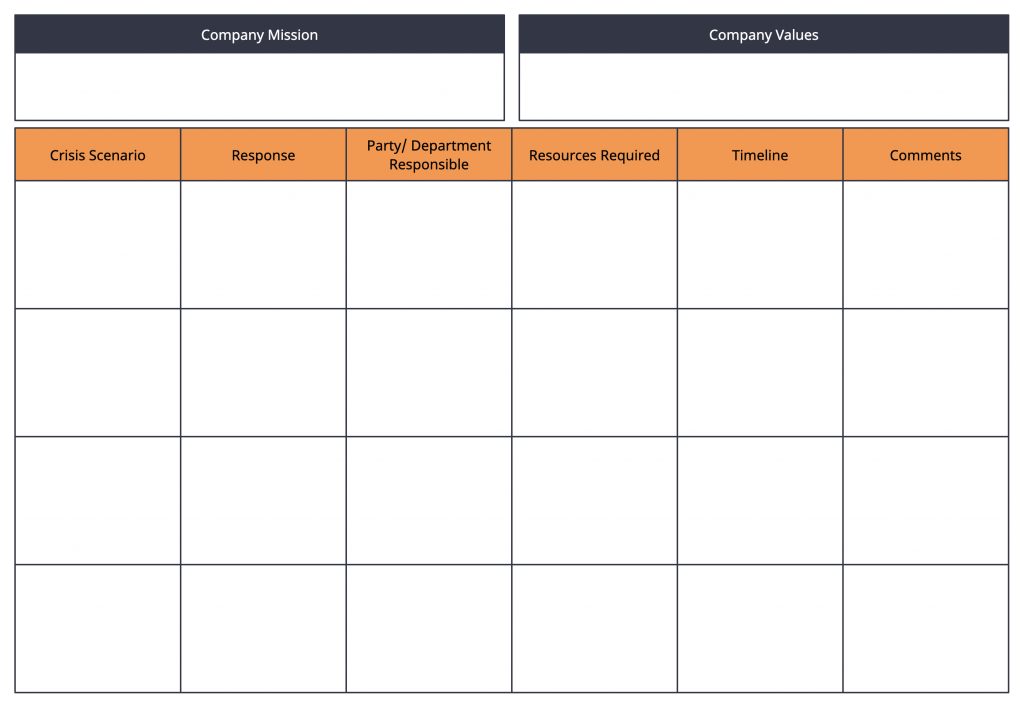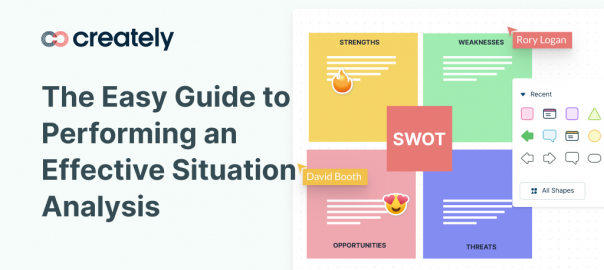In the corporate world, the word ‘crisis’ may invoke a number of images in your head; a mass outbreak of a pandemic, violent weather, a fire in the warehouse, or even an outrageous public scandal.
Many organizations have a process in place to handle such situations, either by trying to keep the incident occurring in the first place or by mitigating or minimizing the impact of the crisis when it does occur. This is called crisis management.
Crisis management should be an essential part of any organization as none of them are immune to such incidents that may jeopardize their operation and eventually put them out of business.
In this post, we’ll explore how to create a crisis management plan properly, step-by-step. We have also provided a crisis management action plan template that you can use right away to get moving.
How to Write a Crisis Management Plan
The essence of crisis management planning includes forming the crisis management team and writing the crisis management plan.
What is a crisis management plan?
It is a document that details the actions that should be taken by the crisis management team when a crisis strikes an organization. It should aim to eliminate or reduce the harm inflicted and help the organization resume its operations as soon as possible after a crisis.
A crisis management plan should,
- Not limit itself to one or two types of crises. As an organization can be exposed to more than one type of crisis, it should include well analyzed and anticipated crisis scenarios that cover all aspects of the organization. The plan should include many actions that can be implemented for those identified crisis scenarios.
- Be developed with the participation of the members of the crisis management team (CMT). Their involvement helps ensure their commitment to the plan.
Importance of a crisis management plan:
A CMP creates the culture and the proper system that an organization needs to be better equipped to effectively react to a crisis.
- In the incident of a crisis, a properly documented plan can help guide the team involved to make coherent decisions and swiftly take the necessary actions to alleviate any negative impact.
- It also helps reassure employees and combat their fear and doubts, while helping to retain their focus on the top priorities of the organization.
- The process of creating the crisis management plan helps with identifying potential threats to your organization, come up with measures to minimize the likelihood of their occurrence and come up with proactive measures to respond to them.
- A crisis management plan will also help avoid damage to the company’s reputation and stay out of legal trouble, and minimize downtime of operation and preserve employee productivity.
Listed below are the steps you need to take when writing a crisis management plan.
Build your crisis management team
The crisis management team is in charge of creating the crisis management plan and executing the response in the event of an actual crisis.
They are responsible for consulting with other company stakeholders (i.e. legal and risk management departments, operations staff, and senior managers) in order to build a sound plan and have the authority to make decisions during a crisis.
The team consists of a leader and sub members who are responsible for each area of planning for and managing a crisis (i.e. logistics, planning, etc.). Members should be individuals with experience in finance, communications, operations, and administration, and usually include department heads, senior managers, human resource managers, site managers, and marketing or sales executives.

You can use an organizational chart to highlight the chain of command and how the roles fit together.
Go over the company mission and values
The first responsibility of the crisis management team is to review the company mission and values and ensure that the responses they include in the plan reflect them.
Determine which crisis can strike your organization
The next step of creating a crisis management plan is to identify what kind of crises your organization could potentially face. By performing a risk analysis, you can effectively identify the most likely types of crises that could threaten your organization.
Some of the most common kinds of crises faced by organizations include legal issues, natural disasters, damage to reputation, cyberattacks, product safety issues, industrial accidents, workplace violence, extortion attempts, and company boycotts. Although you don’t have to include all threats to your organization, cover the most potential ones.
While the types of risks that may strike your organization will vary based on the nature of your business and its environment, here are some ways you can use to identify risks that might affect you.
- Analyze the kinds of crises other organizations in the industry have faced to get an understanding.
- Refer to a comprehensive list of crises and identify the relevant threats to your organization.
- Examine the processes, systems, and structures in your organization one by one to spot vulnerabilities in them that could potentially turn into a crisis.
- Consult an expert (i.e. financial advisor or accountant) or get feedback from employees who may have insight on risks they encounter on a daily basis.
- Look into the customer complaints to identify what they are most unhappy about or dissatisfied by.

Use the mind map to brainstorm and categorize the risks you identify.
Analyze the threats you have identified
Once you build your list of crises that could potentially affect you, analyze them one by one and rank them based on their severity and probability.
You can use a risk matrix template to assess the identified risks based on the likelihood of occurrence and impact in order to prioritize them for mitigation

Your plan should include responses to the most probable crises thus identified.
Identify the warning signs
Go over each of the identified crises and try to determine the warning signs associated with them. Knowing these will allow you to detect the occurrence of a crisis early on and apply measures to prevent or mitigate their impact.
Some warning signs, like the weather forecast, are clearer, while the symptoms of a sales or a financial crisis might be more indefinite and will emerge over time. Recognizing and interpreting them may require the experience and the expertise of your crisis management team.
Conduct a business impact analysis
This assessment helps analyze the potential impact a crisis may have on your business operations. It’ll help you get into detail about the impact of the crisis on your business; how it will disrupt production, block processes, cause financial losses, harm reputation, etc.
Usually, a business impact analysis is conducted with the worst-case scenarios in mind, therefore it lays the foundation for the organization to generate more systematic and logical response plans.
Prepare a response and contingency plan
Now that you have identified and ranked the potential crises and the impact they can have on your organization, the next step is to decide how to respond to them in the likely chance they occur.
While it’s improbable that a crisis would occur in the exact way you have planned for, it’s important to come up with flexible responses that can be applied over multiple circumstances. For example, certain responses that you can apply during a flood can also be applied during an explosion of fire (i.e. evacuation, facility lockdown, isolation).
As you identify the actions to be implemented during each of the crises, it’s also important to assign individuals or teams to be in charge of carrying them out. Along with it, you should fill in the details as to the tools and resources you would need to implement the response and a timeline (use timeline maker) of the steps to be executed.
The other important part of contingency planning is assigning a spokesperson or a communications officer for each of the crises. Usually, the most specialized person in the affected area is ideal for this position.

Educate and train the team
Share the completed crisis management plan with the rest of the team and the key stakeholders of the organization. Ensure that they know their responsibilities and are familiar with how to perform their roles during a crisis; if necessary, you can provide them with the necessary training to better perform their duties.
Review the plan regularly
Go over the content of your crisis management plan and update it as necessary to make sure that it is current and valid. In the aftermath of a crisis, review what worked and didn’t, and update the plan based on the new lessons learned.
Ready to Write Your Crisis Management Plan?
A crisis in its nature is unpredictable and has a low-probability of occurring. However, it can have a high-damage impact. The best way to be prepared for any crisis that may occur is to have planned for it. Follow the steps above in creating your own crisis management plan and share your experience with us in the comments section below.




